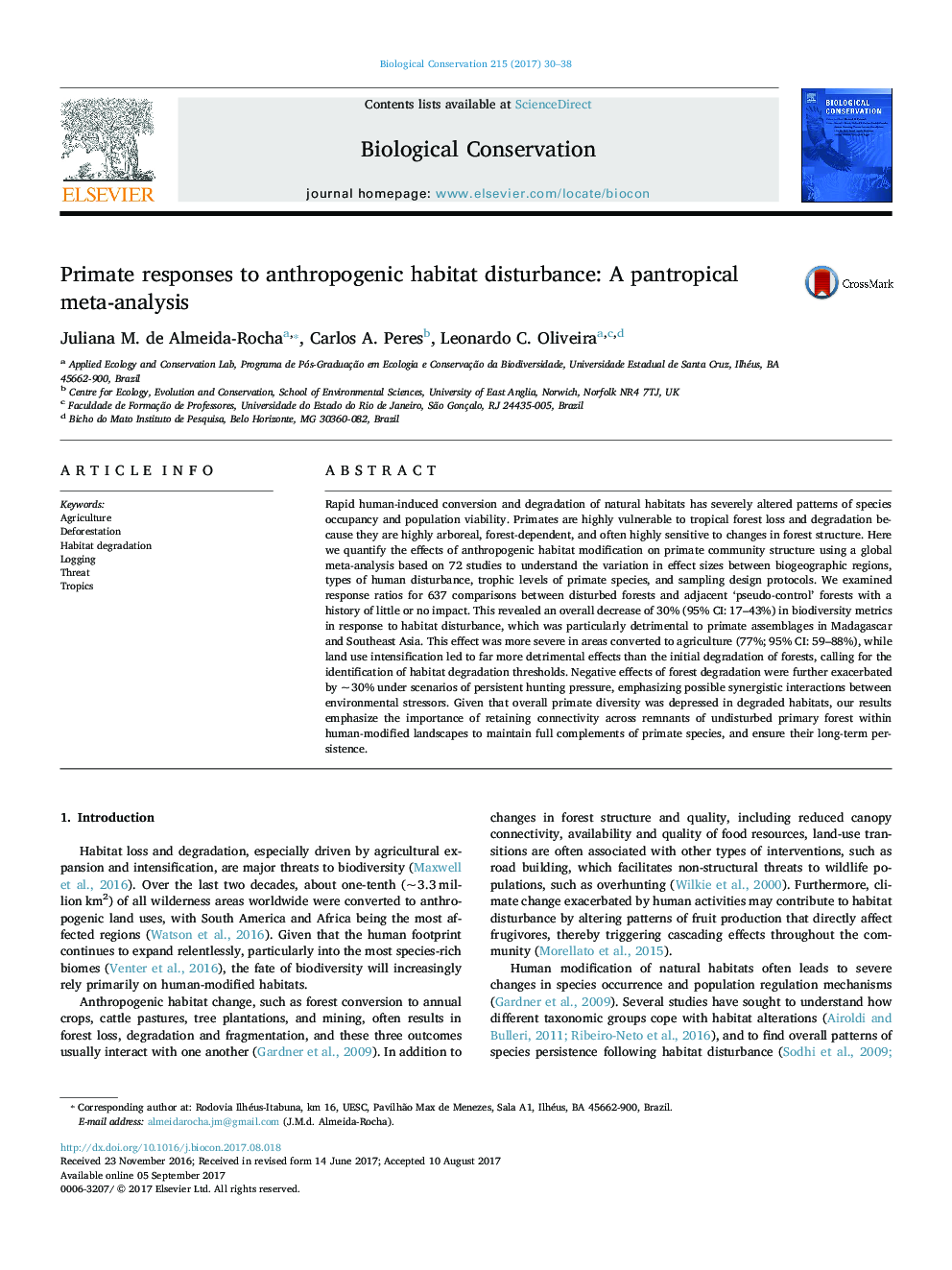| کد مقاله | کد نشریه | سال انتشار | مقاله انگلیسی | نسخه تمام متن |
|---|---|---|---|---|
| 5743019 | 1617890 | 2017 | 9 صفحه PDF | دانلود رایگان |
Rapid human-induced conversion and degradation of natural habitats has severely altered patterns of species occupancy and population viability. Primates are highly vulnerable to tropical forest loss and degradation because they are highly arboreal, forest-dependent, and often highly sensitive to changes in forest structure. Here we quantify the effects of anthropogenic habitat modification on primate community structure using a global meta-analysis based on 72 studies to understand the variation in effect sizes between biogeographic regions, types of human disturbance, trophic levels of primate species, and sampling design protocols. We examined response ratios for 637 comparisons between disturbed forests and adjacent 'pseudo-control' forests with a history of little or no impact. This revealed an overall decrease of 30% (95% CI: 17-43%) in biodiversity metrics in response to habitat disturbance, which was particularly detrimental to primate assemblages in Madagascar and Southeast Asia. This effect was more severe in areas converted to agriculture (77%; 95% CI: 59-88%), while land use intensification led to far more detrimental effects than the initial degradation of forests, calling for the identification of habitat degradation thresholds. Negative effects of forest degradation were further exacerbated by ~Â 30% under scenarios of persistent hunting pressure, emphasizing possible synergistic interactions between environmental stressors. Given that overall primate diversity was depressed in degraded habitats, our results emphasize the importance of retaining connectivity across remnants of undisturbed primary forest within human-modified landscapes to maintain full complements of primate species, and ensure their long-term persistence.
Journal: Biological Conservation - Volume 215, November 2017, Pages 30-38
